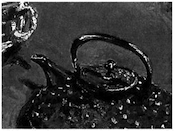
When I say “the black teapot” I’m surprised that everyone knows what I’m talking about. So little of it is black. And yet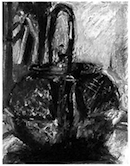 you and I know which teapot I mean. We’ve agreed to call this thing a black teapot. If you ask me to get the black teapot from the kitchen, chances are I won’t come back empty-hand
you and I know which teapot I mean. We’ve agreed to call this thing a black teapot. If you ask me to get the black teapot from the kitchen, chances are I won’t come back empty-hand
ed saying that there was a black teapot until I turned the light on and then it went away. If I were clever I’d turn the light off and grab it while it was still black. But halfway down the hall to your room I’d pass a light and it would no longer be black. Yet being persistent I’d put it into a pillowcase and if it stayed there it stayed black. The moment I open the pillowcase and remove the black teapot it isn’t black.
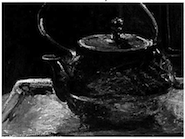 You could try describing the shape to me but shapes change, annexing shadows, joining adjacent surfaces and lobbing off reflections. We just can’t depend on things staying put. Language cannot be taken literally. Somewhere along the line we’ve agreed to edit reality in order to expedite matters. The problem is we’ve come to believe that this shorthand is reality. We think that the teapot can be corralled by a line into a shape and it will stay put.
You could try describing the shape to me but shapes change, annexing shadows, joining adjacent surfaces and lobbing off reflections. We just can’t depend on things staying put. Language cannot be taken literally. Somewhere along the line we’ve agreed to edit reality in order to expedite matters. The problem is we’ve come to believe that this shorthand is reality. We think that the teapot can be corralled by a line into a shape and it will stay put.
I began painting the teapot I use in the studio about three years ago. Saucers have broken, so have teapots, cups; light changes all day.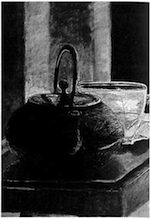
Odd that I’m trying to paint this not-staying-still teapot. It’s so impossible it’s interesting. It’s a perpetual failure. Once I accepted that I’ll never get it, it actually began to be fun. These then are my failures, my “not-teapots” teapots.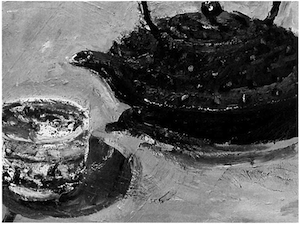
Thank you for subscribing to Tricycle! As a nonprofit, we depend on readers like you to keep Buddhist teachings and practices widely available.